Easy Pictures to Draw Easy Rap Pictures to Draw
This post may contain affiliate links
Drawing realistically can be really hard. Even though we look at the real world every day, it suddenly becomes a daunting task when we try to put it down on paper. Don't worry though. If you're wondering how to teach yourself to draw realistically, there are some tips and tricks that can give you a jumpstart.
To teach yourself to draw realistically, it's important to master shading, learn to draw eyes, avoid scenes at first, draw upside down, use tracing paper, use the grid method, and use a ruler to keep everything in proportion. These seven tips can help you learn to draw realistically more quickly.
These strategies are things I use every day to make sure that my realistic drawings are coming to life. Give them a try and see which ones work best for you as you improve your skills. Let's dive in and bring your drawings to life.
1. Master Shading
Take a look at some of your favorite realistic drawings and study how the artists shaded them. Many people are surprised to realize that a majority of the realistic effects come from effective shading.
Shading is a HUGE factor in realistic drawing.
Once I learned how to shade and draw eyes, which we'll talk about next, my realistic art really improved. The great thing about shading is that it's a lot more simple than it looks, partly because the principles of shading it stay consistent regardless of the image you're trying to draw.
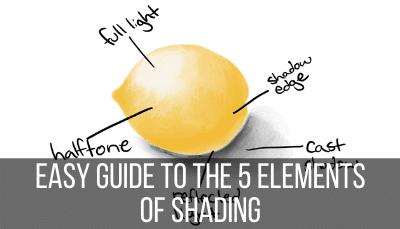
Yes, there are times when shading is more simple and times when it is more challenging, but the principles of light and shadow always stay the same. There will always be a light source that hits an object and creates certain lights and darks. That's how shadows always work.

What makes shading either simple or complex is how many light sources you have and how complex the object is. If there are a lot of different edges and surfaces to bounce light off of, that object will be harder to shade than something like a circle that has no edges.
Start with simple objects and learn the basics of shading. Once you've mastered circles and squares, move on to objects that are a little more advanced. Eventually shading will become second nature to you and you'll be well on your way to creating better realistic drawings.
2. Learn to Draw Eyes
After shading, once you master the eyes, you'll ramp up the realism of your art.
We all know that cliche that the eyes are windows to the soul. They're often the focal point of the face that expresses emotion, character, and a lot of beauty. They're also the part of the body that tends to scare artists the most. While I totally understand the fear, eyes are actually a lot easier than they seem.
Eyes were one of the first things I learned when I started drawing realistically. I became obsessed with them and drew them all over my paper. My school notebooks became a weird mix of class notes and glassy eyeballs. Eyes are still my favorite part of drawing portraits today.
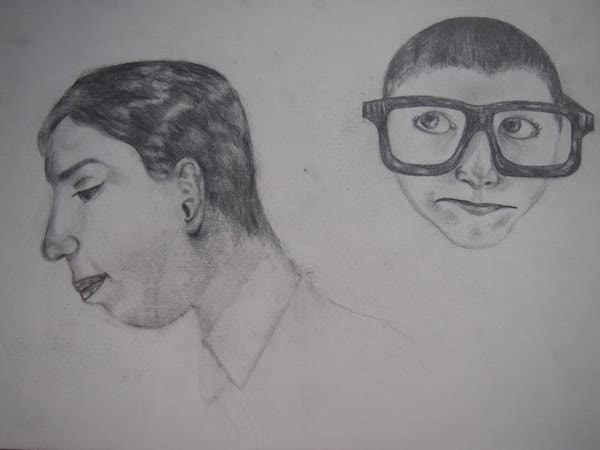
If you've tried to draw eyes in the past and got discouraged, try again with a step-by-step tutorial. Eyes are one of those things that's really tricky until it suddenly clicks. And once it clicks, you might become obsessed like I did. Skillshare has a great class about drawing eyes that will get you started really quickly. It breaks everything down into bite sized steps, but leaves you beautifully drawn eyes when you're done.
Take some time to refine your eye drawing skills.
Be like high school me and draw creepy eyeballs all over your papers. Once you get a handle on drawing eyes, you'll feel a lot more confident about tackling other elements of the face. You'll also have mastered a huge focal point of portraits, which will instantly increase the quality of your portraits tremendously. So, shake off the fear of drawing eyes. Once you get started, you'll realize they are easier than you thought.
A note about symmetry: even when artists master eyes, they get caught up in making a symmetrical set of eyes. Yes, most people have symmetrical eyes. The symmetry isn't perfect though. A lot of us have slight differences between our eyes that make us unique.
When drawing a portrait, focus less on making both eyes match and more on replicating the eye that you're seeing. Meaning, if you're using a photo reference, make the left eye in your drawing look like the left eye in your photo instead of trying to make it identical to the right eye you just drew.
If you aren't using a photo reference for your portrait, don't get too caught up in making your eyes look like mirror images of each other. While it will look weird if they're TOO different, you can embrace the natural quirks and nuances we all have with our facial features.
3. Start with Objects, Not Scenes
Drawing a realistic apple is easier than drawing a realistic fruit basket in a kitchen. Once you expand your piece of artwork beyond a single object, you have to start worrying about depth, perspective, focal point, scale, and overall composition. Basically, life just got a lot more complicated.
If you're like me, you find a way to leave the background out entirely. Sleek, crisp white backgrounds are all the rage aren't they? Well, they definitely make my drawing easier. Another workaround is to make your object realistic, but your background abstract. No one ever said that a drawing that started off as realistic needed to stay that way. Get creative and make your piece of art whatever you need or want it to be.
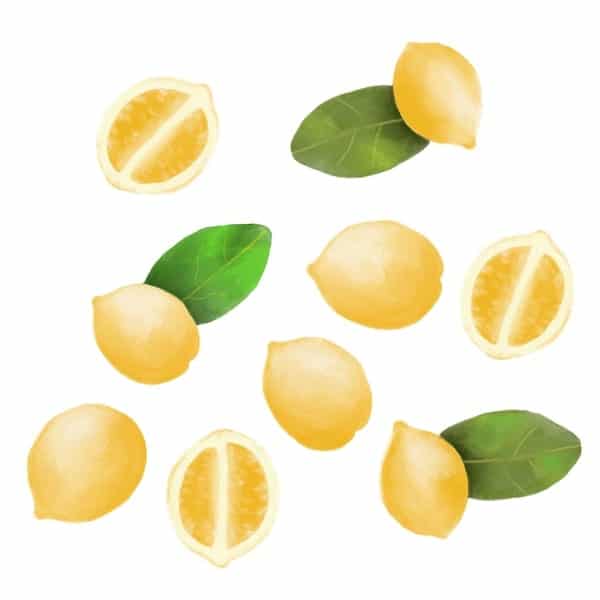
Drawing an entire scene in a realistic way is really complicated. If you've tried it in the past and gotten discouraged, know that you were trying something that's REALLY advanced. Scale back to single objects until you get more comfortable with realistic drawing. As you advance, add one more realistic element each time. Continue to work on skills such as perspective and scale until you're at the point where an entire scene is attainable.
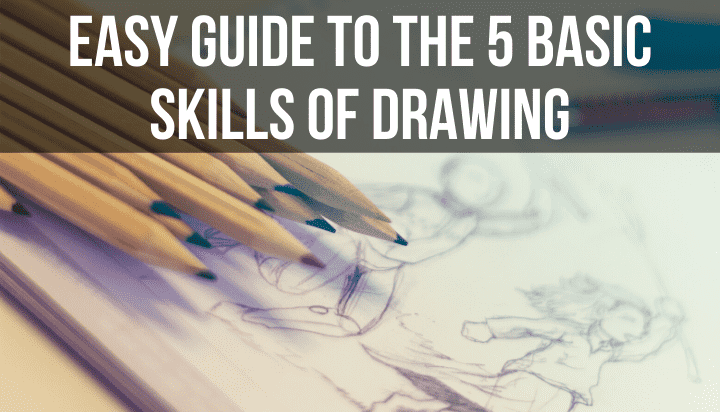
4. Draw Upside Down
A huge key to realistic drawing is seeing things as they actually are and not how we're used to seeing them. It sounds like these would be one and the same, but usually, they aren't. Our brains get used to seeing things "efficiently." When we see an apple, our brain quickly links it to past mental pictures we have of an apple and in lees than a split second we say, "oh, that's an apple."
Our instant recall of everything we see around us is amazingly helpful as we live our lives. It wouldn't be great if we got confused every time we saw an apple and needed to relearn what it was.
This isn't very helpful when it comes to our art though. We are so familiar with what apples look like that we can't really "see" them for what they really are. As we're drawing, our mental idea of an apple overrides what our eyes are telling our brains we're seeing. This is great when we have to draw a generic apple from memory, but not so great when we're trying to draw a realistic representation of the apple sitting in front of us.
When people have trouble with realistic drawing, this "seeing" problem is often to blame. So, to fix it, we need to change up the image of the apple so that our brains think it's something new and different. We want our brains to go back into learning mode, thinking that they have a completely new object in front of them.
A really easy way to do this is to turn your reference photo upside down and draw upside down.
When you turn everything upside down, you force your brain to see things differently. Obviously, you still know that an apple is an apple, even if it's upside down, but you start to see the lines differently. You see that the curves arch in a certain way and the highlights shine in a way you hadn't noticed. Because you no longer have the traditional mental image of an apple to rely upon, you start to draw what you see. What you actually see and not what your brain says you should see.
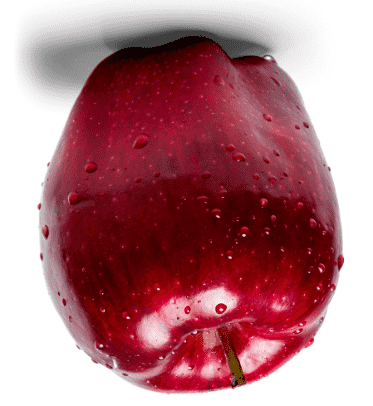
This trick works really well from start to finish if you're using a reference photo. If you're using a real object, you will only want to use it to grasp the basic shape. If you keep your object upside down, the shadows and highlights will be skewed in a weird way.
Learn how to draw from reference. This will make it easier to "see" what is happening with the object you're drawing.
5. Use Tracing Paper to Understand Your Lines
There's a huge debate about tracing in the art world and it often gets a bad rap.While some people think that tracing is the same thing as cheating, there are others that think that it can be a valuable tool if used correctly. I'm in the second camp.

Sure, tracing an entire piece of artwork and calling it your own is plagiarism and should be frowned upon. On the other hand, using tracing as a way to learn can be a great way to help artists improve their skills.
Tracing can be a really good strategy if turning your reference photo upside down doesn't do the trick. If you're still stuck trying to draw realistically, tracing can make you realize things about your image that you never knew before.
There are times I've used tracing paper and discovered that a line I was struggling with was supposed to go the completely opposite direction. It sounds crazy, but it happens a lot.
Use tracing paper to understand the basic shapes, lines, shadows, and spacings of what you're trying to draw. When the actual lines are right in front of you, showing through the tracing paper, you have little choice but to draw them accurately. This can unlock a lot of mental barriers you might have been having while trying to realistically draw something.

If you have a light box, this can be a great alternative to tracing paper. You can get a light box for a cheap price. Depending on how much tracing paper you intend to buy, a light box can be a cost effective and waste reducing way to trace your reference photos.

You can also use your iPad as a light box, if you have one.
6. Use the Grid Method to Break Your Image Into Chunks
Another great way to "see" your object and reference photo differently is to break it up into pieces. If you put a grid over an apple, it suddenly isn't an apple; it's a series of boxes with lines in them. Lines are much easier to draw than an apple, especially if those lines are neatly placed into their own little boxes.
The grid method is often used to help artists scale their images without ruining the proportions. If my reference photo is 4×6, but I'm trying to draw it on a 16×24 canvas, I can draw a 10 line by 10 line grid on each. Looking at each grid box on my 4×6 photo and copying it into the same grid box on my 16×24 canvas, I'll eventually end up with a perfectly proportioned replication of my 4×6 image on my 16×24 canvas.
The grid method is a really cool trick for scaling, but it's also a really cool trick for breaking down your reference images into manageable parts. If I've been struggling to draw an apple, as soon as I put a grid over it, I only have to worry about the single line that's going through each box. This forces your brain to look at the individual lines instead of the whole apple that it's getting caught up on.
7. Grab a Ruler to Make Sure Everything is in Proportion
This is another trick for seeing things correctly. Because our brains are so used to making sense of the world in a split second, we don't take the time to understand how everything we're seeing relates to each other. For example, we know that the apple is bigger than the key lime, but by how much? In the real world, it doesn't really matter. In the art world, it matters a lot.
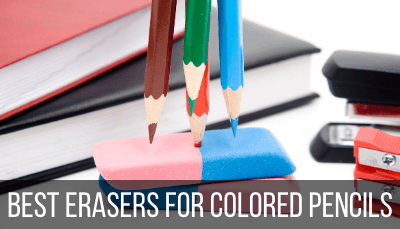
It can be really helpful to pull out a ruler and measure your objects, whether they're the real world objects or the objects in your reference photo. Once you measure them, turn them into proportions. They don't need to be perfect, but do as best as you can.
If the apple is 6 inches and the key lime is 2 inches, you have a ratio of 3 to 1. Whatever size you draw the apple and key lime, make sure that you draw them at a 3:1 ratio. If ratios aren't your thing, get as close as possible. Get a measurement for your smallest object and then see how many of those small objects would fit into the other objects you're drawing. This can give you a baseline for your proportions without taking a lot of measurements.
This trick not only works for multiple objects within a scene, but also for the different components of one individual object. For example, you can take the measurement of the apple and the measurement of the stem to make sure they're in proportion with each other.
It's not always the most enjoyable thing to start off an art project with some math, but it can be a huge help when scaling your drawing and making sure that everything is in proportion with each other. No one ever said that fruit baskets with monster-sized key limes looked very realistic, so pulling out your ruler can be a quick trick that makes a big difference.
If you're trying to teach yourself to draw realistically, you've taken on a fun challenge. All of the tips we've talked about are a great way to get started and quickly improve your skills. If you're looking for more guidance though, I'd suggest getting a subscription to Skillshare. Skillshare has classes for all abilities, from beginning to advanced. Their drawing classes are really top notch and will guide you step-by-step towards mastery.
Skillshare has a generous free trial, which will give you instant access to every single class that they offer. I've taken a lot of Skillshare classes and have learned a lot in just an hour, let alone a full trial. You have nothing to lose, so go grab that free trial and start drawing.
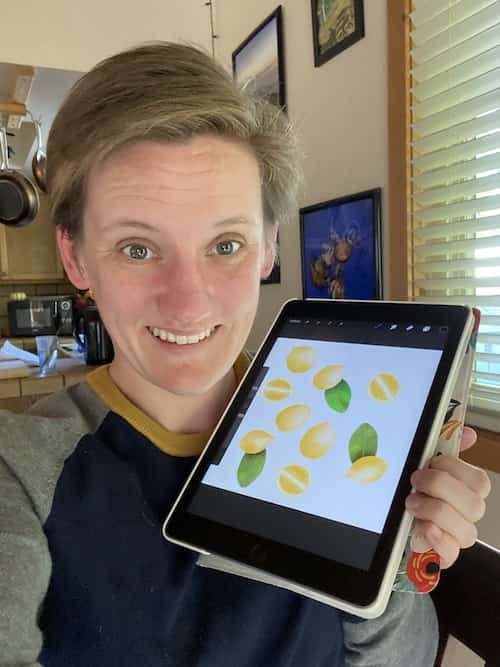
Diana has been an artist for over 25 years and has training in drawing, painting, digital drawing and graphic design. Diana's latest obsession is digitally drawing with Procreate and creating t-shirt designs with Canva. Diana has experience selling her art across a number of platforms and loves helping other artists learn how to make money from their art as well.
villanuevafrompeat1957.blogspot.com
Source: https://adventureswithart.com/drawing-realistically-7-tips/
0 Response to "Easy Pictures to Draw Easy Rap Pictures to Draw"
Postar um comentário